I can’t resist buying vintage test equipment:
The Eico 430 is a tube-based oscilloscope. By that I don’t simply mean that it uses a Cathode Ray Tube, but that it uses vacuum tubes for the amplifiers and oscillators as well. It’s truly an amazing piece of equipment for the era that it was created in. The video above walks through my trying out the scope (it didn’t work right… does anything bought on ebay ever work right??) to me fixing the scope, and then using it in conjunction with a couple RF frequency generators and my sweep generator.
Now for some still shots:
It’s probably not evident from that picture, but the scope isn’t actually working very well. The Horizontal gain control is fully clockwise, and there’s less than one division of horizontal deflection on the lissajous pattern that I’m displaying. I noticed the gain would improve at higher horizontal frequencies, and I decided to take a look at the schematic:
I was immediately suspicious of C23, a 20 microfarad electrolytic capacitor connected to the horizontal gain capacitor. It’s an electrolytic capacitor that appeared to be original, and the attenuation at low frequencies would be consistent with a failed capacitor. I replaced it with a modern cap, and the problem was fixed:
Here’s a picture of the replacement capacitor:
Well gee that turned out to be really easy. The scope works pretty well. I bought it with the particular purpose in mind of using it in X-Y mode in conjunction with a sweep generator, and that’s shown in the video at the top of this post.
Now for some teardown images:
As far as vintage gear goes, a vintage oscilloscope is one of the funner pieces of gear that you can acquire. Just beware that you might have to repair it yourself!
Here’s a picture of my Eico 430 in action, together with an Eico 369 sweep generator:
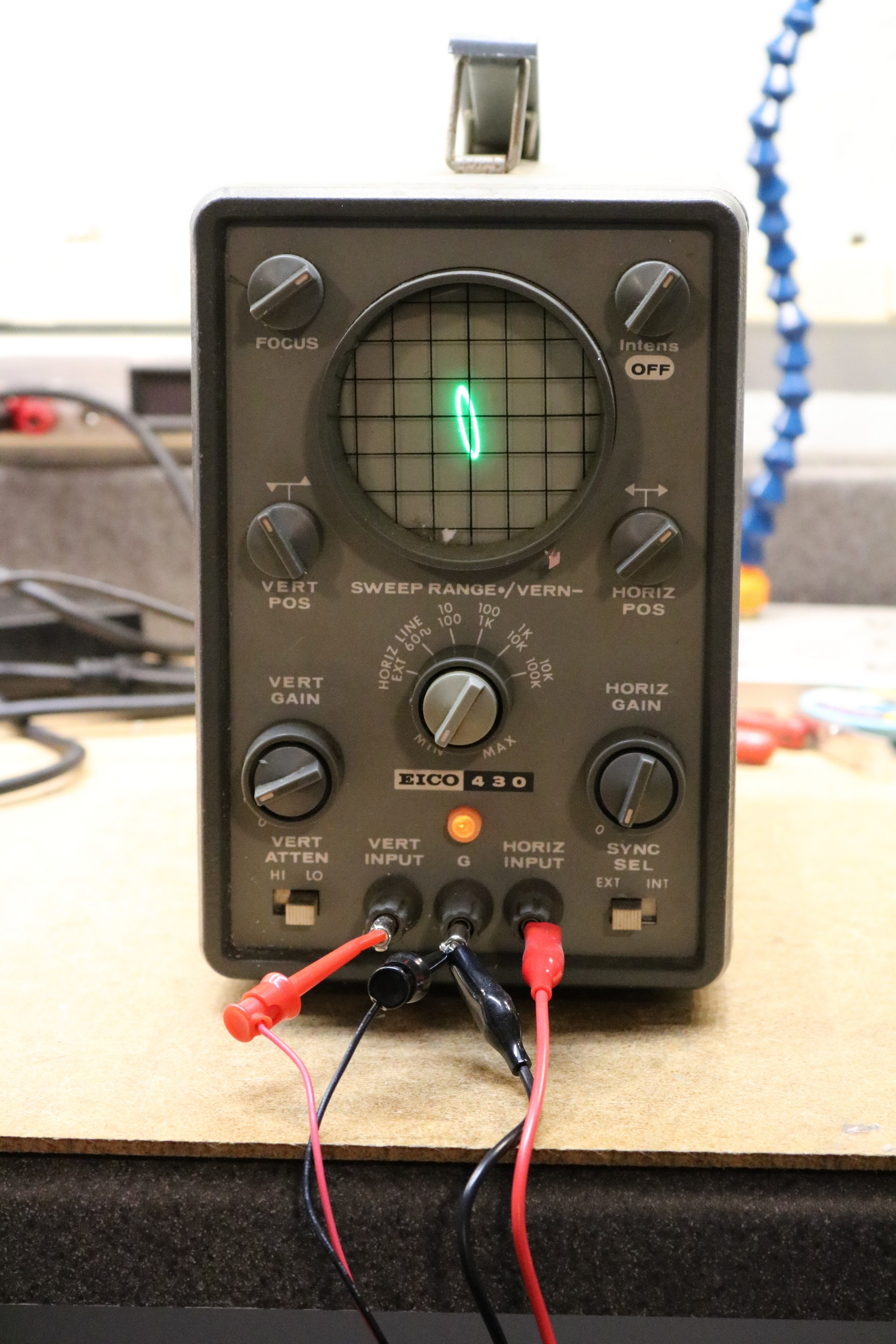
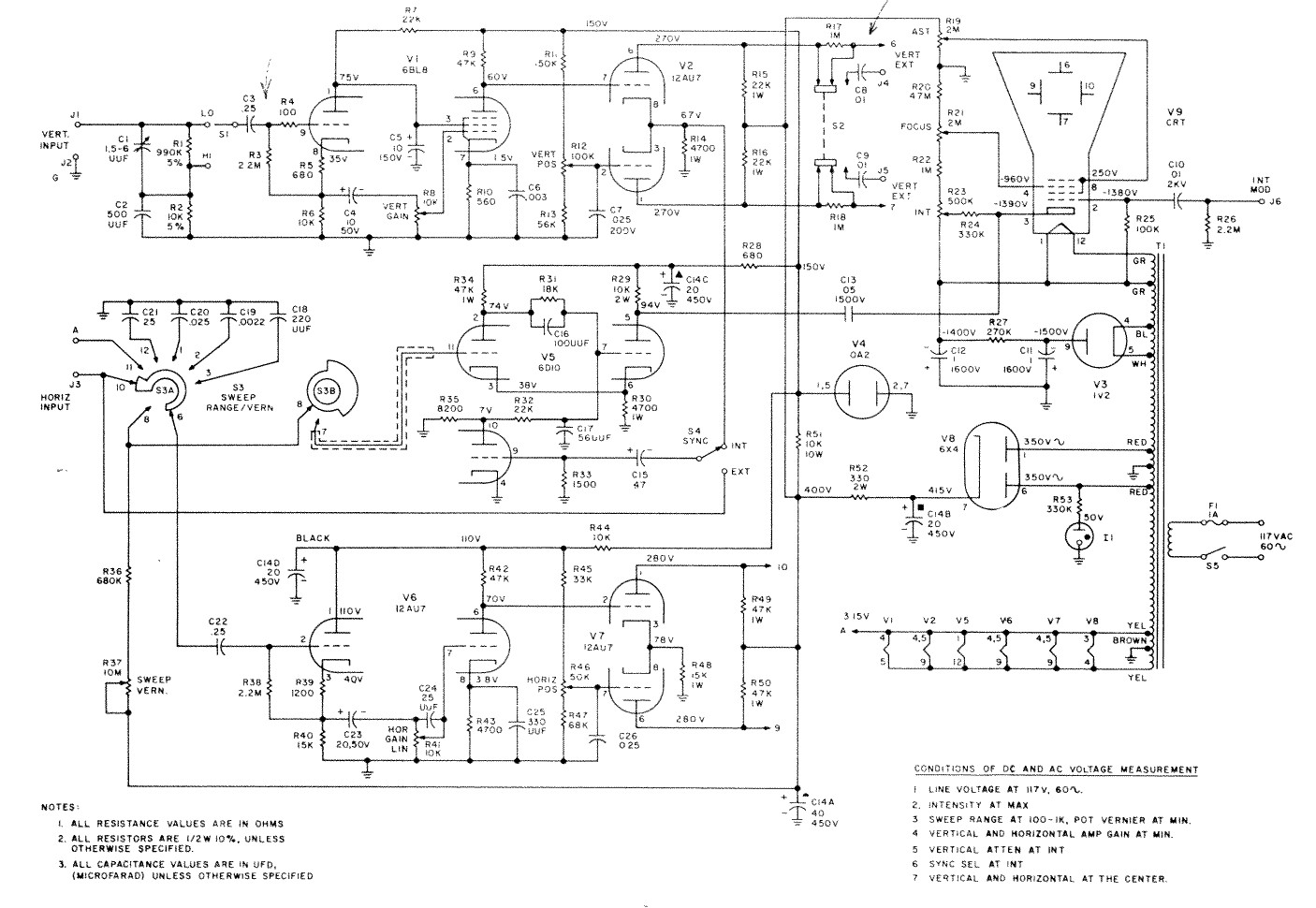
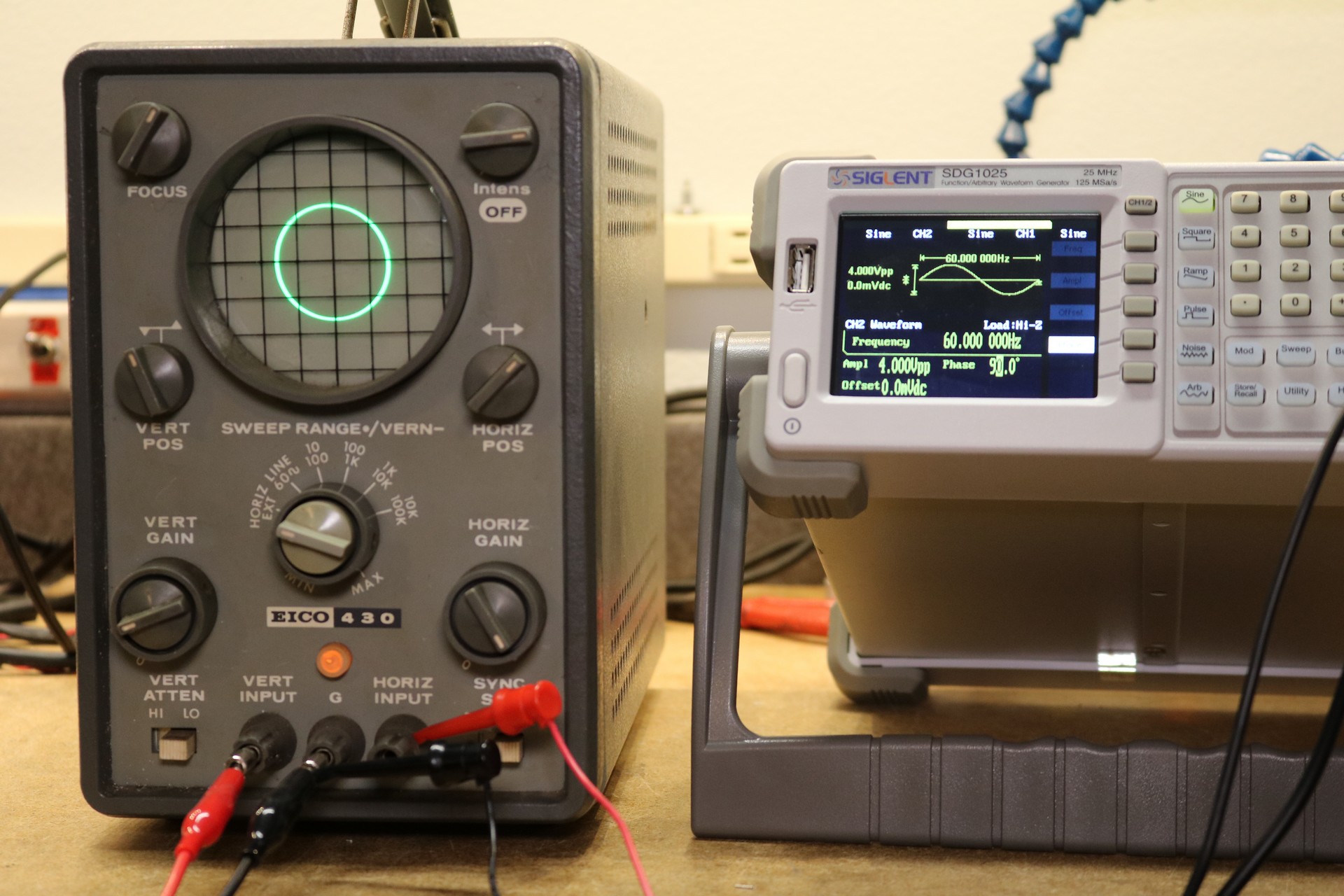
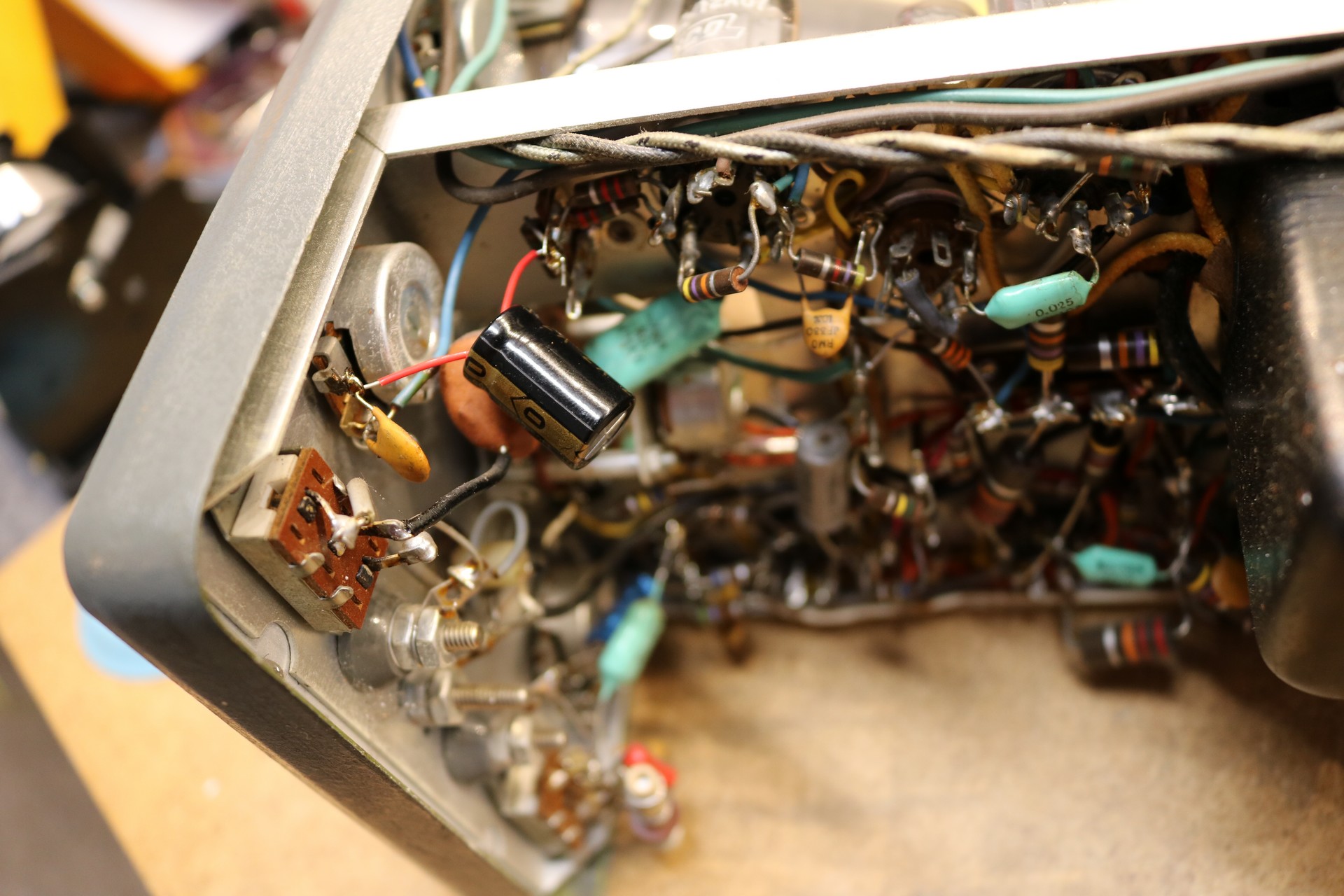
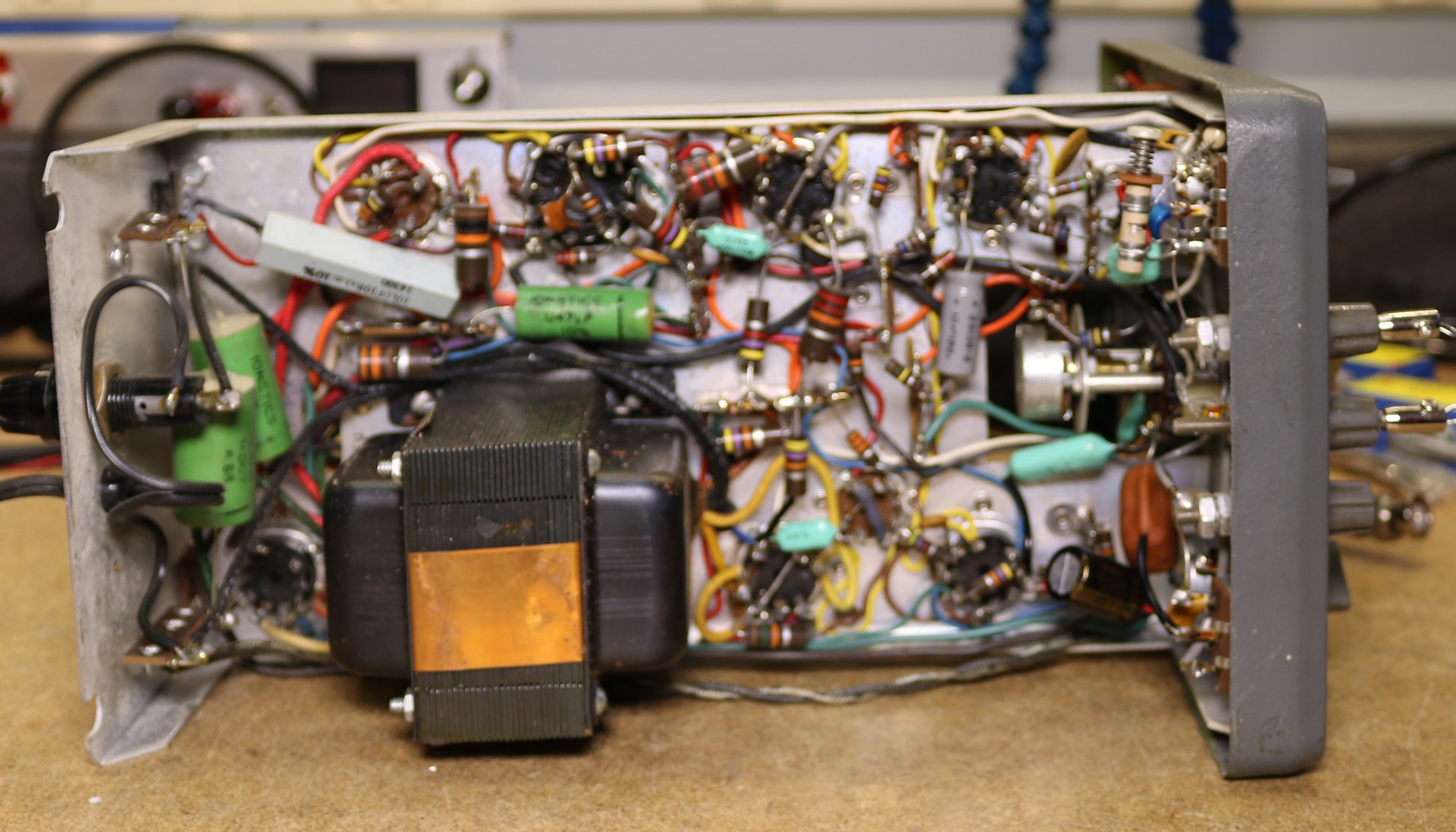
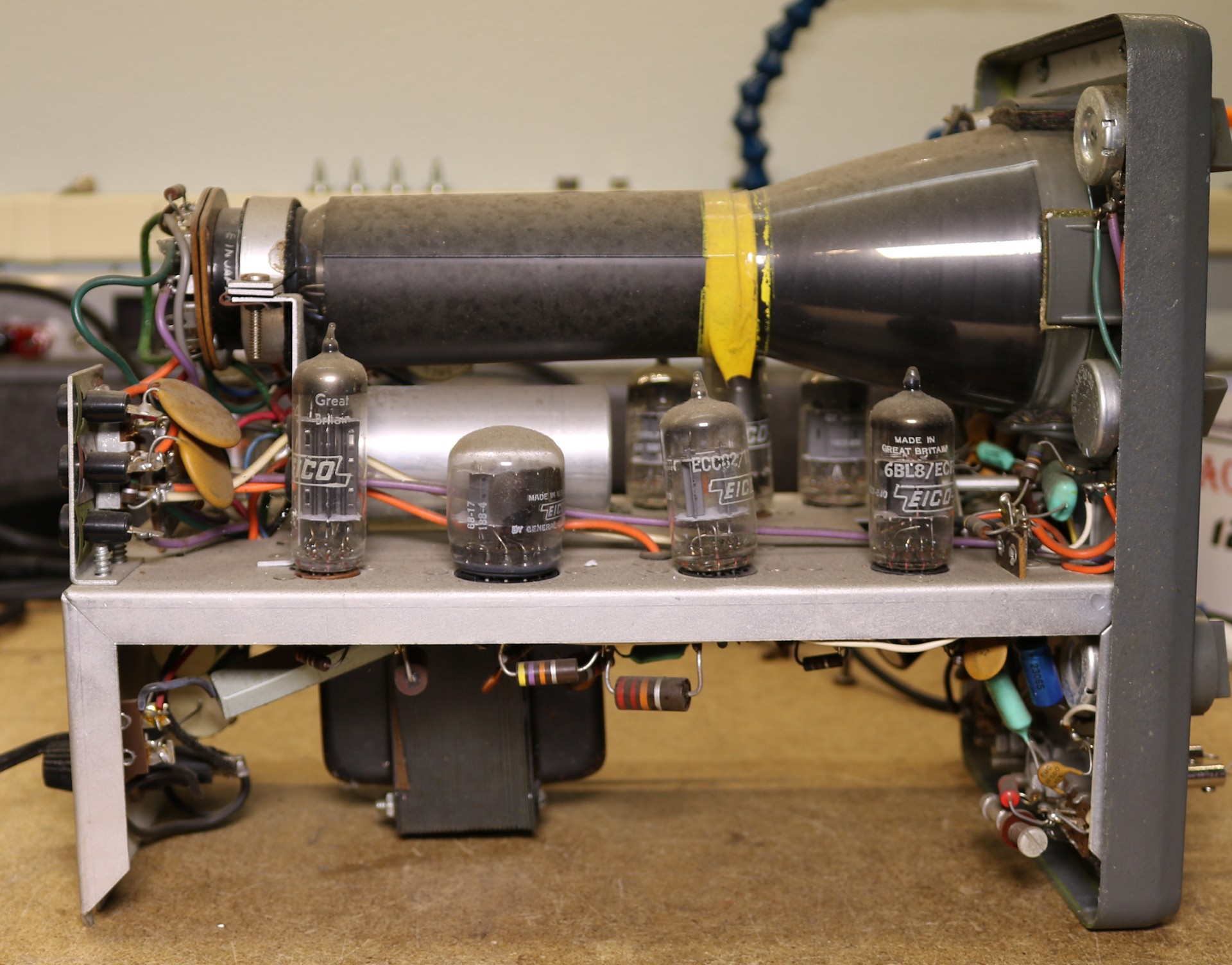
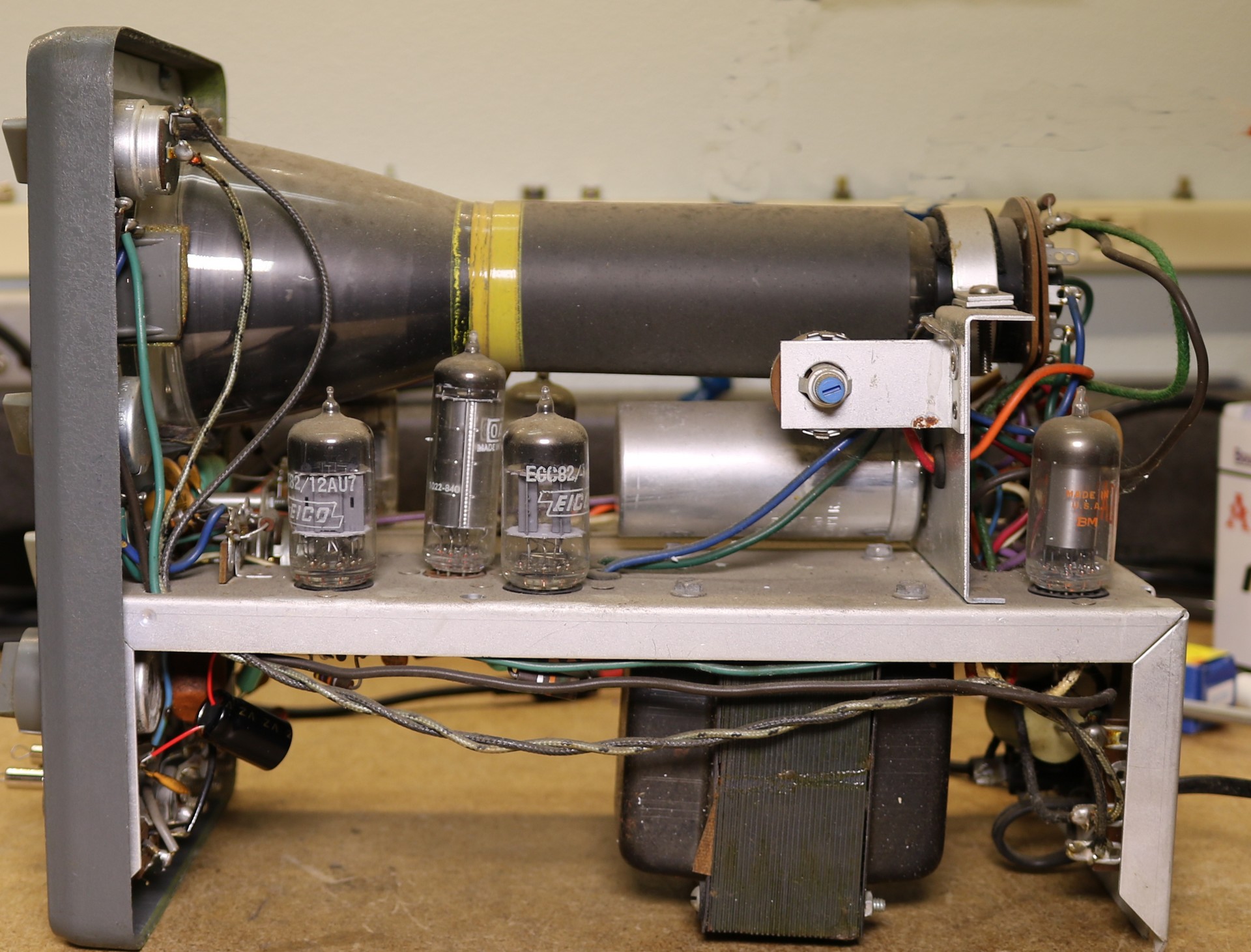
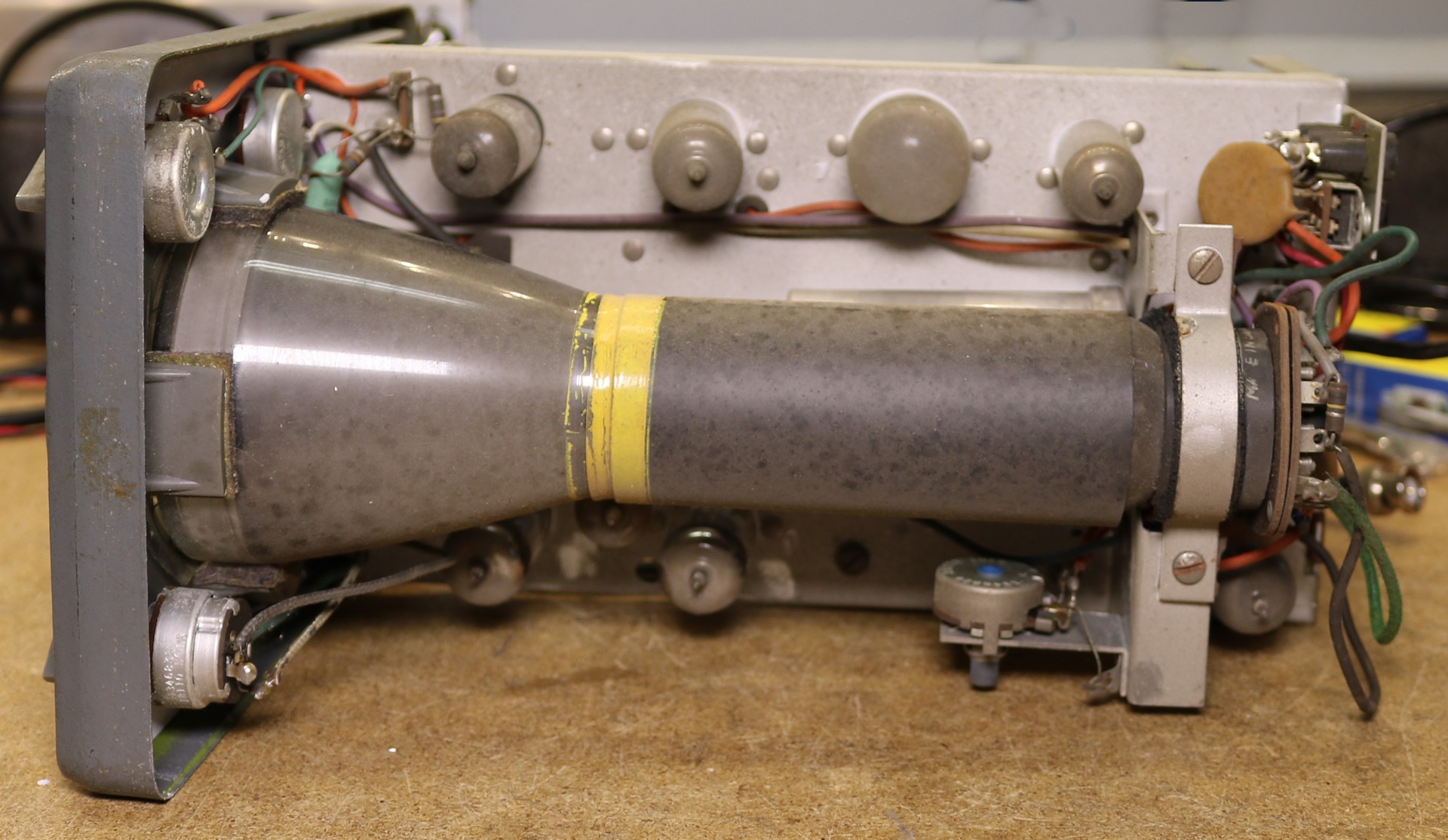
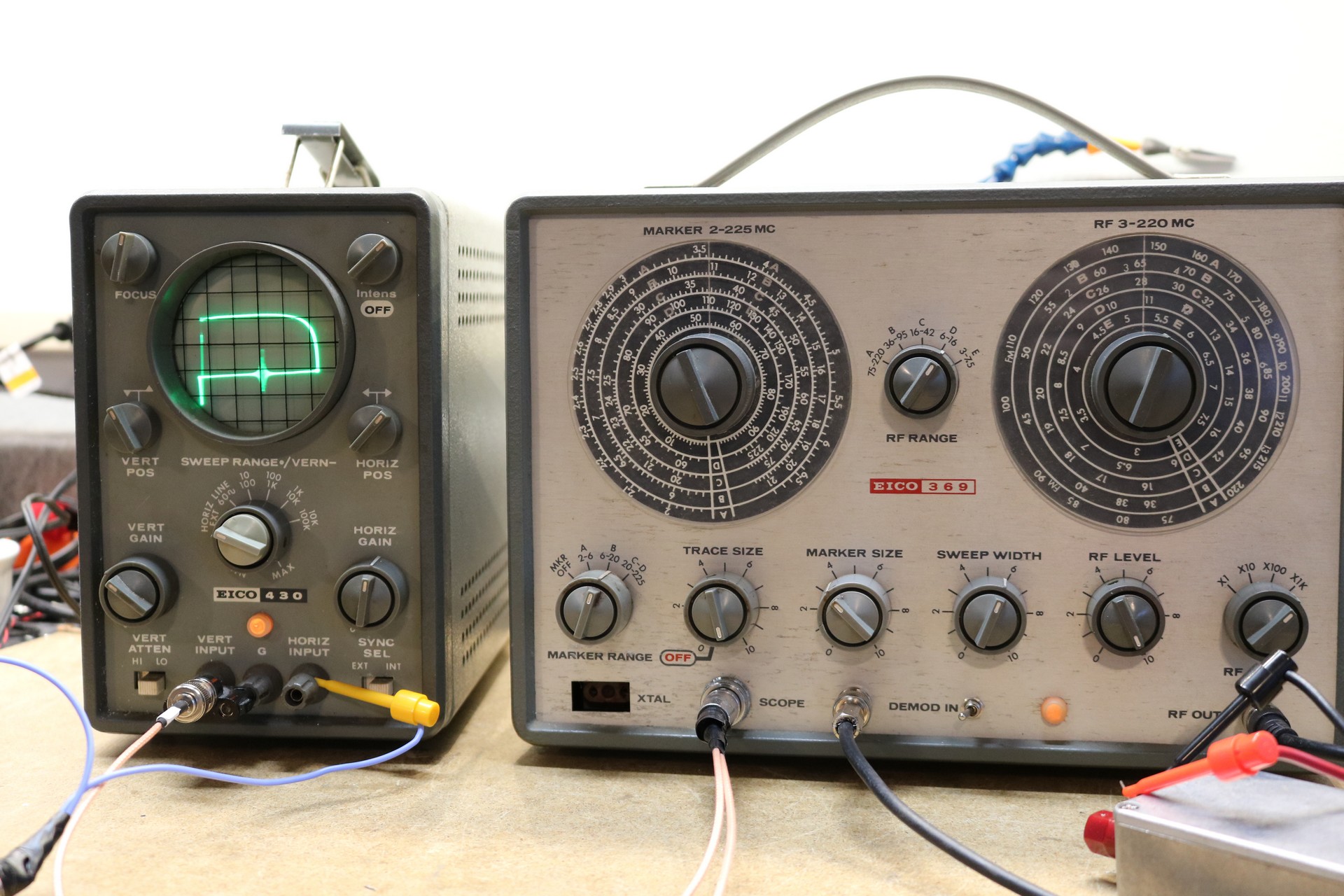
HI Dr. Baker I am looking for The Nixie Driver Boards you made for your kickstarter project because I want to build your nixie freq counter if the boards aren’t too expensive.
just found you recently love the way you explain things and the type of stuff you do..
Sincerely
Tony
Dr. B-
Thank you for the great website and YouTube presentations on the EICO 430. I recently acquired a 430 and have been have some “interesting” results which I hope you might help me fix.
In the Horz/Ext mode using a simple curve tracer, I am getting a strange “golf club” end when testing diodes. (I can send you a photo ?) This only occurs only with diodes—the images of capacitors and resistors look as expected. I thought it might be the tracer or probes, but I tested the same diodes on other oscilloscopes and there was no “club”.
My modest electrical expertise suggests something (a capacitor?) is not right in the vertical circuit in the H/E mode, but I’m just guessing.
Do you have any idea of the part or area I should look at and test?
Mucho thanks for any help you can provide.
Best regards.
Steve R
i built one of these in 1966 and used it for several years. It worked well but ran much too hot. I advise using a muffin fan to keep it from meling down like mine did in the early 70’s when the power transformer cooked itself.
Hi Dr. Baker, I was thinking about picking up an EICO 465 and a Dumont Cathode-Ray Oscillograph Type 208-B and I am needing help with proper connections.
I’m guessing I can use banana plugs and alligator clips, correct?
Would I have to change any resistors to use a 10x probe?
I inherited a 430 from a hamfest about 20 years ago and used it every day as a station monitor. It has direct to plates connection on the back, which I use for sampling an SSB envelope. Works perfect`